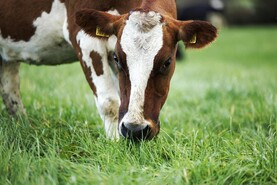‘Magic day’, where grass growth equals demand, has happened on many farms already.
It has happened later than normal due to sluggish spring growth rates.
Attention must now turn to managing grass as dairy and beef cows approach the start of breeding and mid-season ewes reach peak milk yield.
Measure
You can’t manage what you don’t measure. Grass measuring should take place twice weekly as we approach peak growth.
If you are not using Pasturebase or another service, simply walking the farm twice a week will allow you to identify surpluses or deficits and allow for remedial action to be taken quickly.
Ideal cover for cows and cattle at this stage of the year is 1,300kg to 1,400kg DM/ha or 1,100kg to 1,200kg DM/ha for sheep.
On lowly stocked farms, some of the grazing platform may be closed up for long-term silage to artificially increase stocking rate and avoid having to mow out paddocks weekly.
On dairy farms, the target now should be to stop strip grazing and target three grazings per paddock. Doing this will ensure cows are fully fed at least two out of every three breaks.
If you feel the third break is too little, move a fence and allow for a fresh bite. This will ensure cows are content, yet will allow for good graze-outs, which are key to maintaining quality.
Keeping the strip wire up could mean cows are constantly being under-fed from chasing graze-outs.
Fertiliser
Fertiliser spread now will see significantly better returns for value for money compared with in the latter half of the year.
Protected urea offers the best value for money for nitrogen content, as well as the obvious environmental benefits. Application should be at a rate of 0.8/units per acre per day.
For a 20-day round, this means 16 units per acre, whether you follow cows, spread grazed paddocks weekly or blanket-spread.






 This is a subscriber-only article
This is a subscriber-only article











SHARING OPTIONS: